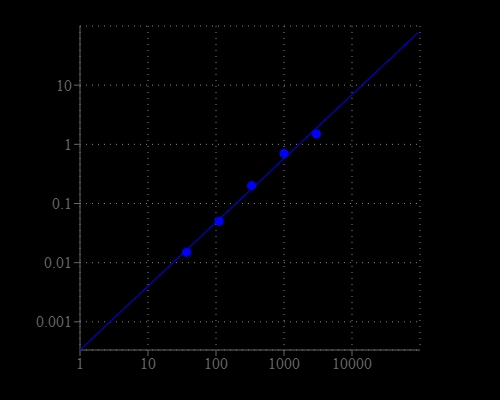Cell Meter™ Colorimetric Cell Cytotoxicity Assay Kit
Monitoring cell cytotoxicity is one of the most essential tasks for studying cellular functions. Our Cell Meter™ assay kits are a set of tools for monitoring cell viability. There are a variety of parameters that can be used. This kit uses a proprietary water-soluble and cell-permeable dye that changes its absorption spectra upon cellular reduction. The absorption ratio change is directly proportional to the number of living cells. The characteristics of its high sensitivity, non-radioactivity and no-wash method make the kit suitable for high throughput screening of cell proliferation or cytotoxicity against a variety of compounds. This kit does not require pre-mixing of components and has higher sensitivity compared to the traditional tetrazolium-based colorimetric assays (such as WST-8, MTT and XTT). The kit provides the reagents sufficient to run 1000 assays (regular size) or 5000 assays (bulk package). All the kit components are quite stable with minimal cytotoxicity, thus a longer incubation time (such as 24 to 48 hours) is possible if required. Our Cell Meter™ Colorimetric Cell Cytoxicity Assay Kit is robust and convenient to use. It can be readily adapted for a wide variety of instrument platforms. The assay can be performed in a convenient 96-well or 384-well microtiter-plate format.


| Catalog | Size | Price | Quantity |
|---|---|---|---|
| 22779 | 5000 Tests | Price | |
| 22780 | 1000 Tests | Price |
Storage, safety and handling
| H-phrase | H303, H313, H333 |
| Hazard symbol | XN |
| Intended use | Research Use Only (RUO) |
| R-phrase | R20, R21, R22 |
| Storage | Freeze (< -15 °C); Minimize light exposure |
| UNSPSC | 12352200 |
Instrument settings
| Absorbance microplate reader | |
| Absorbance | 570/605 nm |
| Recommended plate | Black wall/clear bottom |
Documents
Contact us
| Telephone | |
| Fax | |
| sales@aatbio.com | |
| International | See distributors |
| Bulk request | Inquire |
| Custom size | Inquire |
| Technical Support | Contact us |
| Request quotation | Request |
| Purchase order | Send to sales@aatbio.com |
| Shipping | Standard overnight for United States, inquire for international |
Page updated on December 22, 2025
